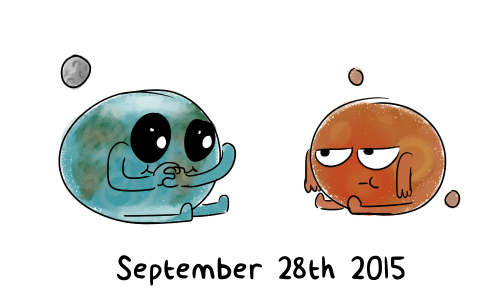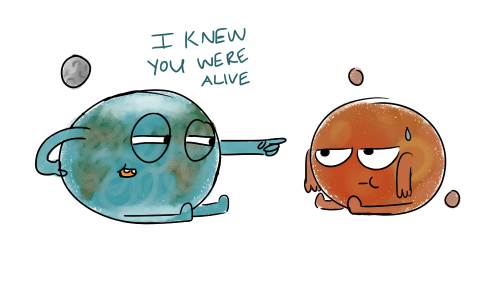Rick Guidice

Rick Guidice
More Posts from Inter-stellxr-blog and Others




T-51 days (October 14) - OA-4 Cygnus service module arrives at KSC Marking a major milestone in its prelaunch processing flow, the service module for the Cygnus spacecraft’s return to flight arrived at Kennedy Space Center earlier this week. The pressurized cargo module for the OA-4 mission arrived at Kennedy in early August, and technicians have been checking out the module ahead of cargo stowing. OA-4 marks a significant shift in the Cygnus program, not just because it is the spacecraft’s return to flight, but also the first flight of the Enhanced Cygnus. The cargo module is 3.9 feet longer than the initial Standard Cygnus, allowing the spacecraft to transport over 3,300 extra pounds of cargo. The Service Module also boasts new Orbital ATK-made Ultraflex solar arrays, which are lighter than the original rectangular arrays made by DutchSpace. The image below shows a comparison between the two versions of the spacecraft, with the Enhanced Cygnus on the right.

Final assembly and cargo stowage is expected to occur in late October and early November. Encapsulation inside an Atlas V 400-series payload fairing will occur in mid November, followed by rollout to SLC-41 and vehicle integration in late November. Currently, the launch of OA-4 is scheduled for December 3, though that date may move up or be pushed back depending on various factors. It will be the first flight of the spacecraft since an October 29, 2014 launch failure that destroyed the spacecraft and subsequently grounded the program. The enhanced Antares 200 rocket is undergoing final integration and assembly at Wallops Island, Virginia, and Orbital ATK teams are preparing for a period of pad testing. The next flight of Cygnus on an Antares is scheduled for some time in the first half of 2016. Until then, Orbital ATK purchased two Atlas V 401 rockets to launch their enhanced Cygnus spacecraft; these missions are designated OA-4 and OA-5. The second flight is slated for sometime in spring of 2016.


Rocket engine exhaust often contains a distinctive pattern known as shock diamonds or Mach diamonds. These are a series of shock waves and expansion fans that increase and decrease, respectively, the supersonic exhaust gases’ pressure until it equalizes with atmospheric pressure. The bright glowing spots visible to the naked eye are caused by excess fuel in the exhaust igniting. As awesome as shock diamonds look, they’re actually an indication of inefficiencies in the rocket: first, because the exhaust is over- or underexpanded, and second, because combustion inside the engine is incomplete. Both factors reduce a rocket engine’s efficiency (and both are, to some extent, inescapable). (Photo credit: XCOR)

Integrated Space Plan, a 100-year plan to take mankind out of the solar system, has been updated.
The original Integrated Space Plan, created in 1989 >>
Boeing 747 carrying space shuttle Endeavor

Saturn V Cutaway ~ This fascinating Saturn V cutaway drawing is by far the most detailed I’ve ever come across. It’s an original, official Boeing engineering breakdown by Don Sprague and includes everything you ever wanted to know about the Saturn V’s internal workings – right down to millimetre accurate measurements …


Wernher von Braun’s space station concept in Collier’s, March 22, 1952 - (source)

How Big is our Solar System Infographic - http://astronomyisawesome.com/infographics/how-big-is-our-solar-system/










-
 equinoxmx reblogged this · 4 years ago
equinoxmx reblogged this · 4 years ago -
 equinoxmx liked this · 4 years ago
equinoxmx liked this · 4 years ago -
 outrunning-drones reblogged this · 8 years ago
outrunning-drones reblogged this · 8 years ago -
 navylostboy3 reblogged this · 8 years ago
navylostboy3 reblogged this · 8 years ago -
 radroachtradingco liked this · 8 years ago
radroachtradingco liked this · 8 years ago -
 ffaanta liked this · 8 years ago
ffaanta liked this · 8 years ago -
 morrhammer reblogged this · 8 years ago
morrhammer reblogged this · 8 years ago -
 justacactuswithfeelings liked this · 8 years ago
justacactuswithfeelings liked this · 8 years ago -
 glowy-spaceman reblogged this · 9 years ago
glowy-spaceman reblogged this · 9 years ago -
 rumpels-popo liked this · 9 years ago
rumpels-popo liked this · 9 years ago -
 echobunnygo-go reblogged this · 9 years ago
echobunnygo-go reblogged this · 9 years ago -
 cavegirl66 reblogged this · 9 years ago
cavegirl66 reblogged this · 9 years ago -
 hardcodeddead reblogged this · 9 years ago
hardcodeddead reblogged this · 9 years ago -
 sheerdropz reblogged this · 9 years ago
sheerdropz reblogged this · 9 years ago -
 carolinec-lima liked this · 9 years ago
carolinec-lima liked this · 9 years ago -
 c3p-mo reblogged this · 9 years ago
c3p-mo reblogged this · 9 years ago -
 azurevalencia reblogged this · 9 years ago
azurevalencia reblogged this · 9 years ago -
 popppycock reblogged this · 9 years ago
popppycock reblogged this · 9 years ago -
 yoohoosoakedratmaze reblogged this · 9 years ago
yoohoosoakedratmaze reblogged this · 9 years ago -
 amethystablaze reblogged this · 9 years ago
amethystablaze reblogged this · 9 years ago -
 ldy-be liked this · 9 years ago
ldy-be liked this · 9 years ago -
 firstandlastofme liked this · 9 years ago
firstandlastofme liked this · 9 years ago -
 prrfctdisaster liked this · 9 years ago
prrfctdisaster liked this · 9 years ago -
 bunnyonplanetq reblogged this · 9 years ago
bunnyonplanetq reblogged this · 9 years ago -
 agentpantybunches reblogged this · 9 years ago
agentpantybunches reblogged this · 9 years ago -
 madison-fay reblogged this · 9 years ago
madison-fay reblogged this · 9 years ago -
 dunmeries liked this · 9 years ago
dunmeries liked this · 9 years ago -
 sinclair-solutions reblogged this · 9 years ago
sinclair-solutions reblogged this · 9 years ago -
 solamenteyya liked this · 9 years ago
solamenteyya liked this · 9 years ago -
 nathanielthecurious liked this · 9 years ago
nathanielthecurious liked this · 9 years ago -
 lanouvellezelande reblogged this · 9 years ago
lanouvellezelande reblogged this · 9 years ago -
 mrrockcockgotitwrong reblogged this · 9 years ago
mrrockcockgotitwrong reblogged this · 9 years ago -
 spacecow2455 reblogged this · 9 years ago
spacecow2455 reblogged this · 9 years ago -
 witheringeye reblogged this · 9 years ago
witheringeye reblogged this · 9 years ago -
 gatsbby reblogged this · 9 years ago
gatsbby reblogged this · 9 years ago
"I don't know who will read this. I guess someone will find it eventually. Maybe in a hundred years or so." -Mark Watney
174 posts